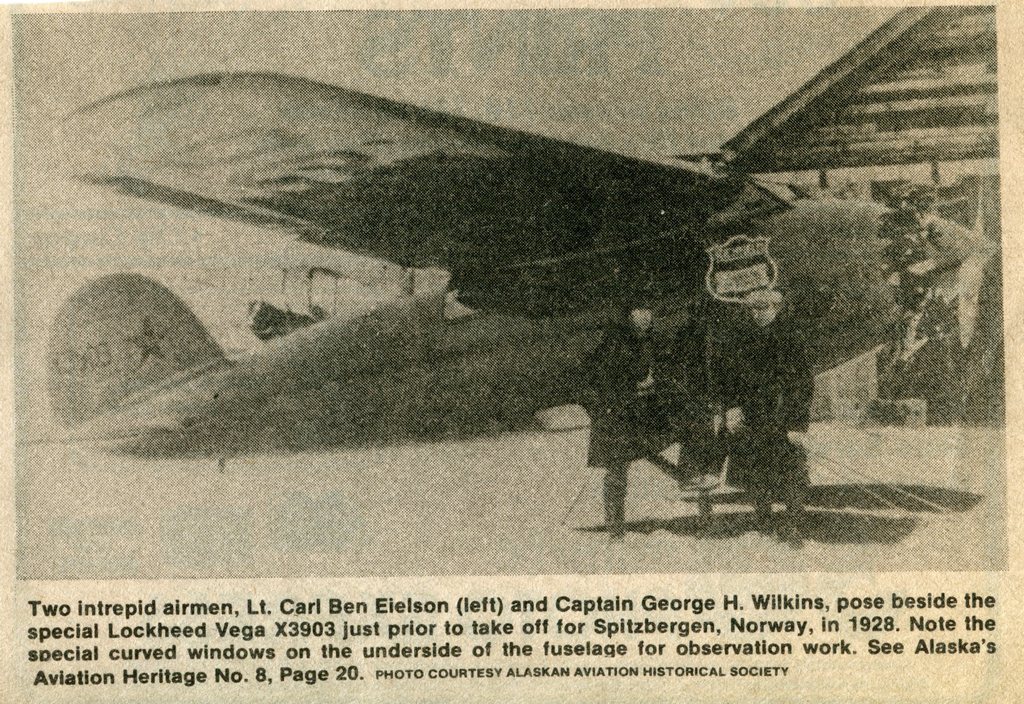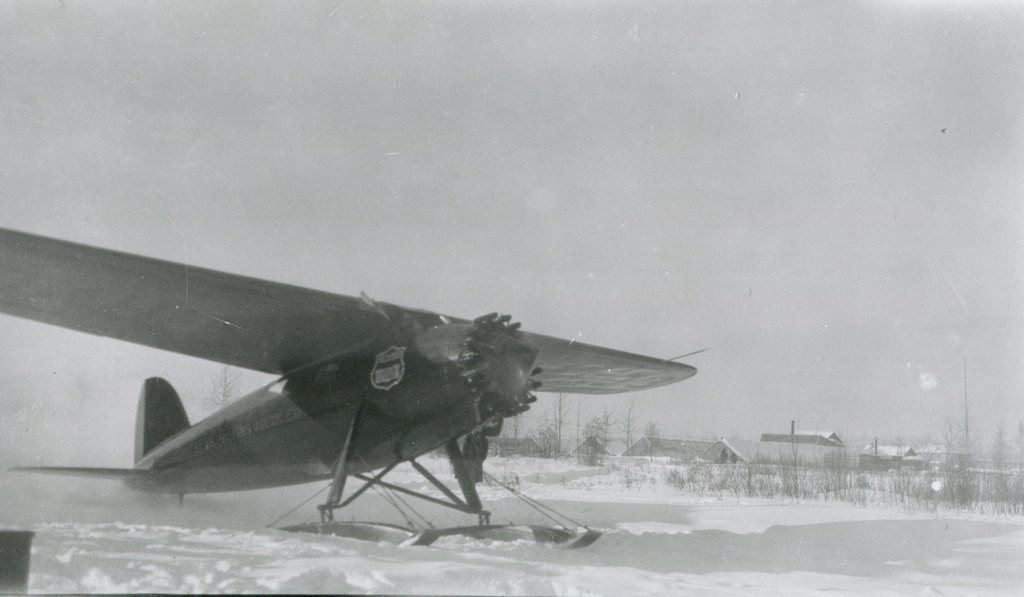Sir Hubert Wilkins
Detroit's expedition to the Arctic
1926 - Detroit News and Carl Ben Eielson
1927 - Detroit News-Wilkins Artic Expedition
1928 April - Wilkins and Eielson finally flew over the polar sea, landing successfully in Spitzbergen
Detroit's expedition to the Arctic
1926 - Detroit News and Carl Ben Eielson
1927 - Detroit News-Wilkins Artic Expedition
1928 April - Wilkins and Eielson finally flew over the polar sea, landing successfully in Spitzbergen


The National Film and Sound Archive of Australia vimeo.com - NFSA - Northward Bound! Captain George H. Wilkins: Arctic Explorer (1928)
Described as one the most amazing feats of navigation, Australian (not British as stated in inter-title) explorer George Hubert Wilkins and American pilot Ben Eielson in a Lockheed Vega were the first to fly over the Arctic from Point Barrow, Alaska (USA) to Spitsbergen (Svalbard), Norway in April 1928. The flight of 20 hours combined adventure with scientific discovery as they flew over previously unexplored territory.
In this newsreel footage we see Wilkins and Eilson departing Point Barrow on their record setting flight with skis attached to their aircraft. During the flight a sextant was used to navigate instead of a compass, which is unreliable when used close to the north or South Pole. Navigation was further complicated by a lack of landmarks and poor visibility. The flight ended with the pair riding out a blizzard in their aeroplane for five days before realising that they had reached their destination. The trip had been partly financed by selling an aeroplane to fellow aviators Charles Kingsford Smith and Charles Ulm; it later became famous as 'The Southern Cross'.
Two previous (unsuccessful) attempts in 1926 and 1927 had been made to cross the Arctic. In 1927, due to engine failure, they were forced to land in the arctic wilderness and walk nearly 160km through snow and ice over 13 days to reach civilization and safety.
Wilkins was no stranger to adventure. From the Canadian Arctic Expedition in 1913-16 he went on to fly in the First World War and be appointed as an official war photographer. Monash called him ‘one of the bravest men I know’. In 1919 he participated in the England-Australia air race and crashed in Crete. Along with Eielson he was the first person to fly over both poles and within the same year. He participated in the first round the world flight by the airship Graf Zeppelin in 1929. He also attempted to travel under the North Pole ice cap in a submarine.